Letters from Arthur Seaforth Blackburn to his family, 1941 - Part 15
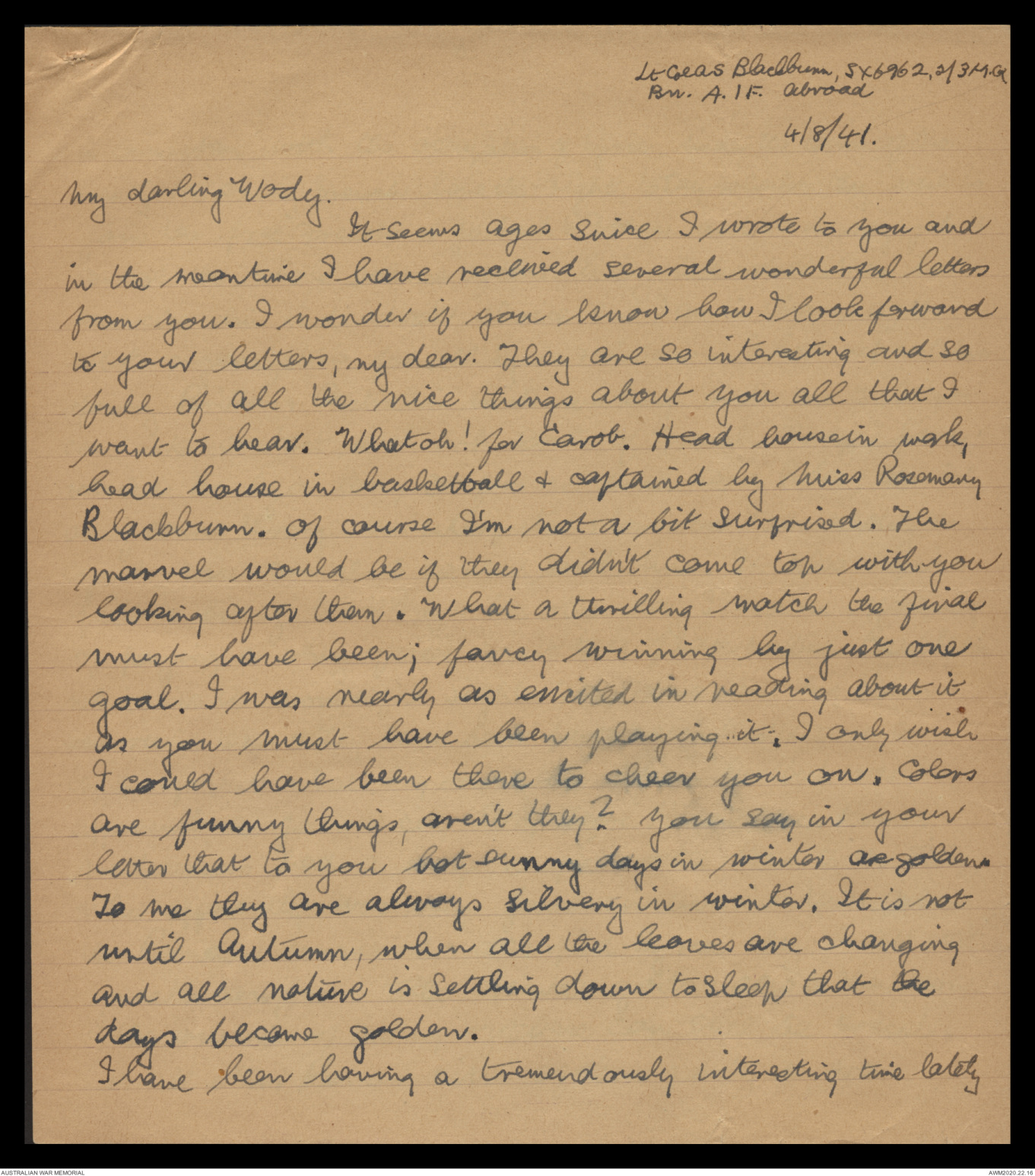
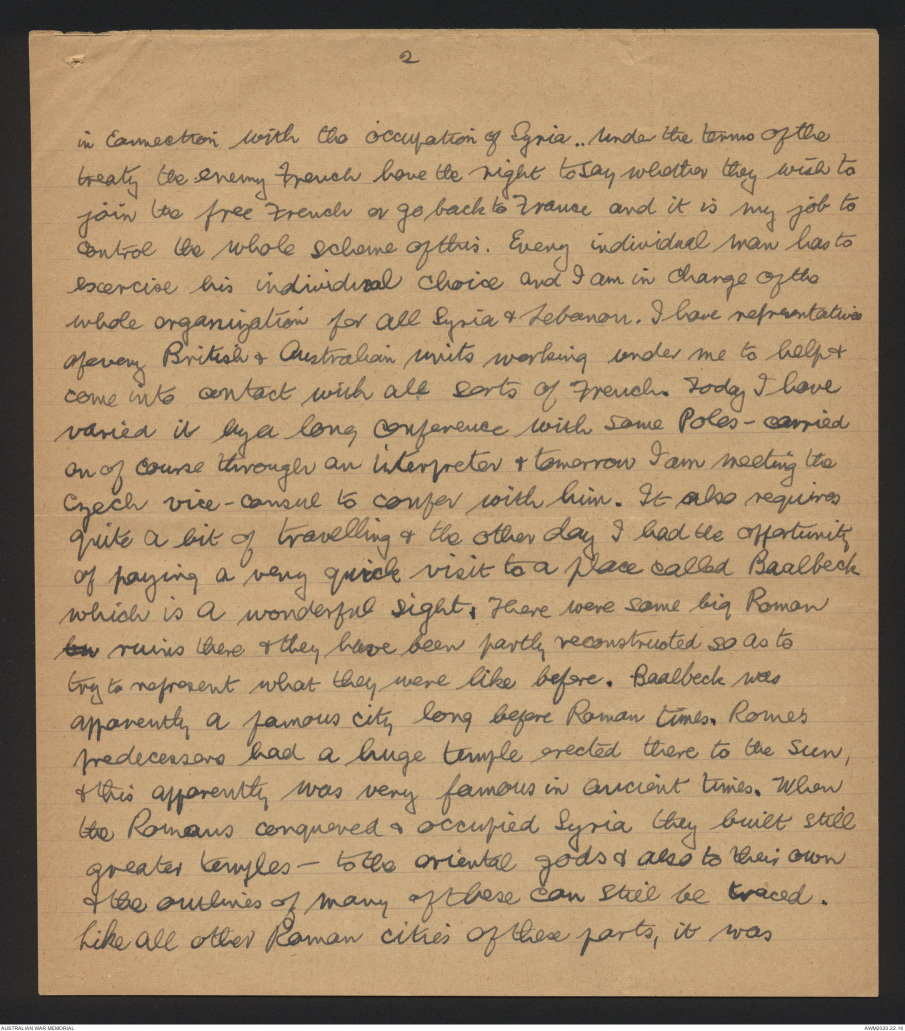
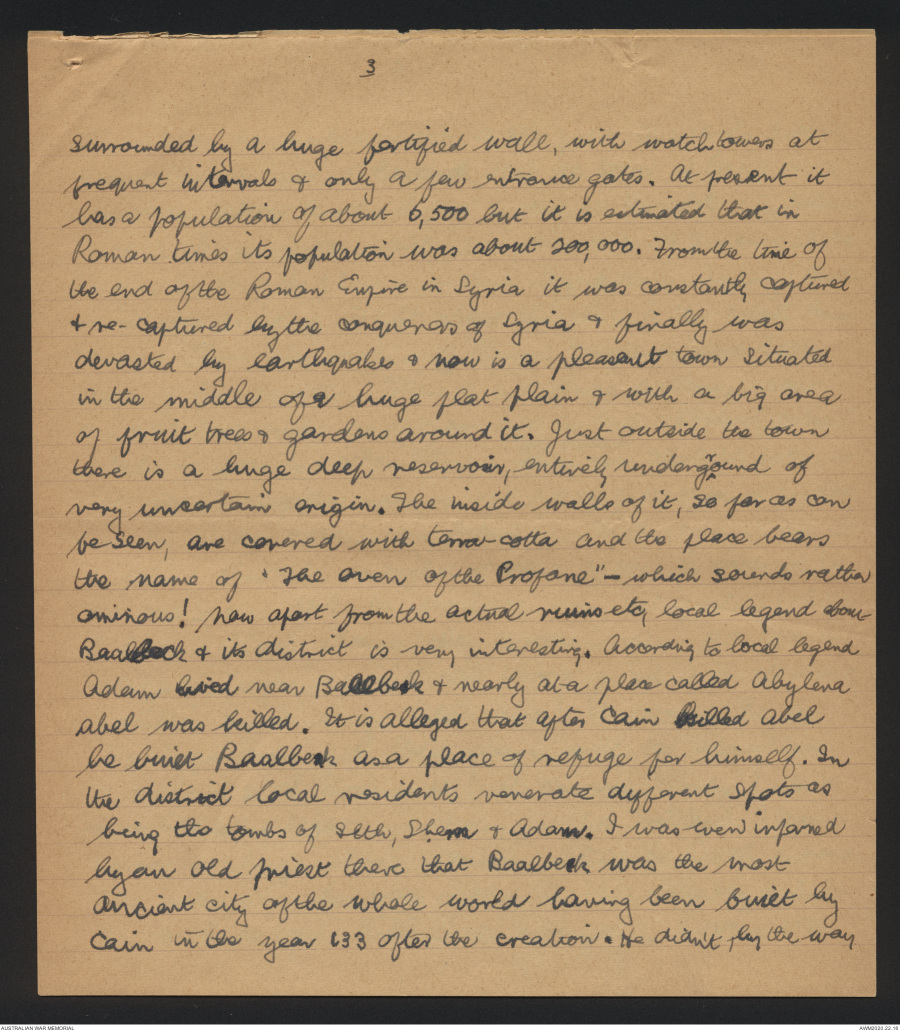
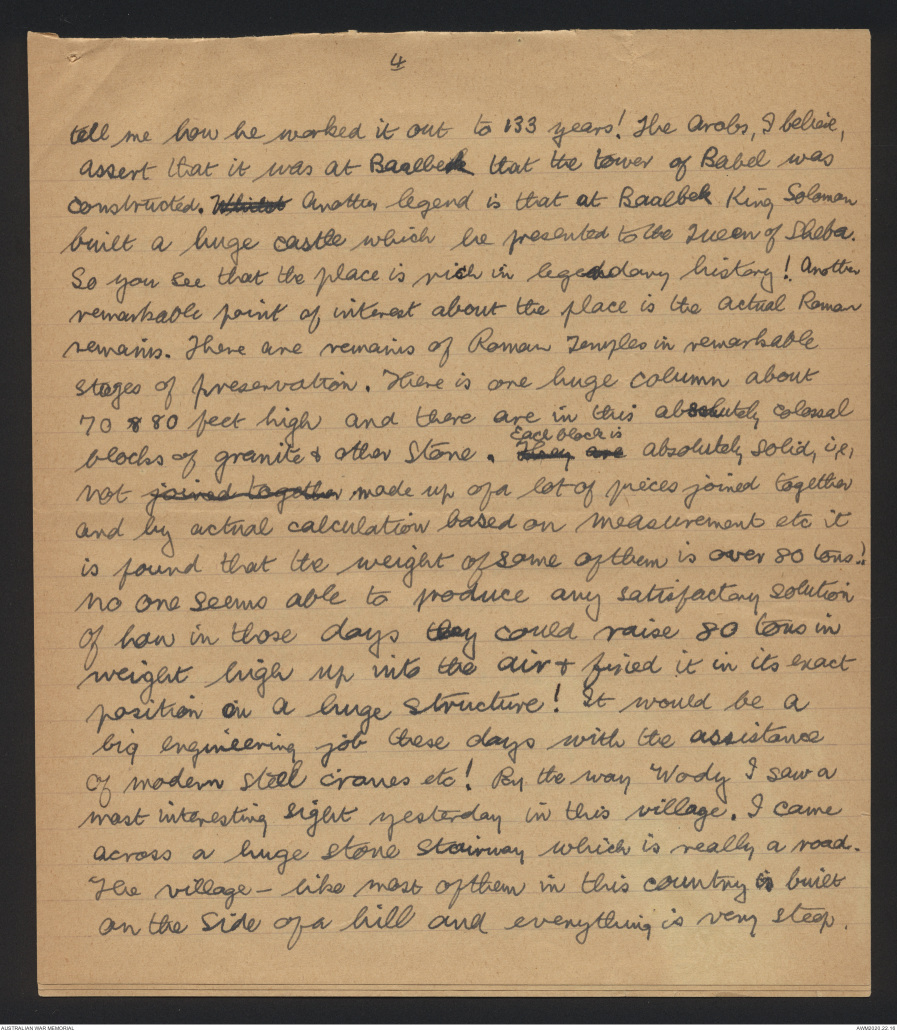
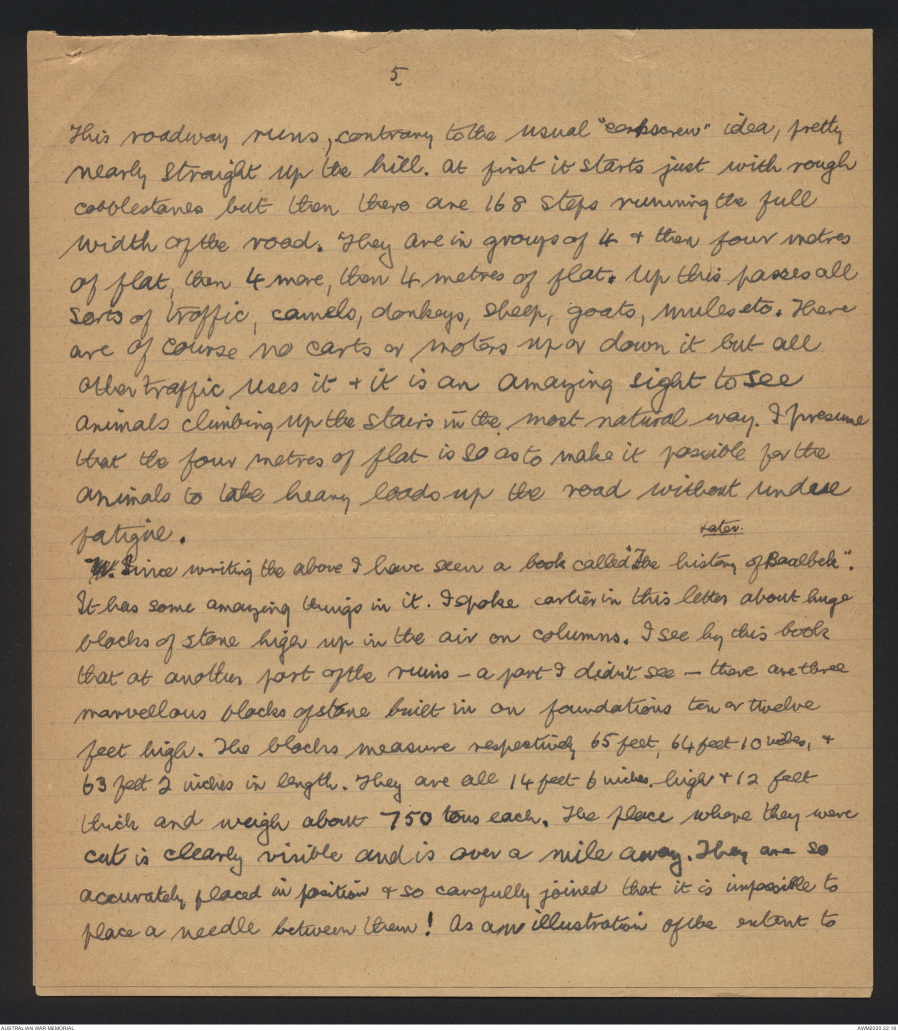
Lt Col A S Blackburn, SX6962, 2/3 M.G
Bn. A.I.F Abroad
4/8/41
My darling Wody.
It seems ages since I wrote to you and
in the meantime I have received several wonderful letters
from you. I wonder if you know how I look forward
to your letters, my dear. They are so interesting and so
full of all the nice things about you all that I
want to hear. What oh! for Carob. Head house in work,
head house in basketball & captained by Miss Rosemary
Blackburn. Of course I'm not a bit surprised. The
marvel would be if they didn't come top with you
looking after them. What a thrilling match the final
must have been; fancy winning by just one
goal. I was nearly as excited in reading about it
as you must have been playing it. I only wish
I could have been there to cheer you on. Colors
are funny things, aren't they? You say in your
letter that to you hot sunny days in winter are golden.
To me they are always silvery in winter. It is not
until Autumn, when all the leaves are changing
and all nature is settling down to sleep that the
days become golden.
I have been having a tremendously interesting time lately
2/
in connection with the occupation of Syria .. Under the terms of the
treaty the enemy French have the right to say whether they wish to
join the free French or go back to France and it is my job to
control the whole scheme of this. Every individual man has to
exercise his individual choice and I am in charge of the
whole organization for all Syria & Lebanon. I have representatives
of every British & Australian units working under me to help &
come into contact with all sorts of French. Today I have
varied it by a long conference with some Poles - carried
on of course through an interpreter & tomorrow I am meeting the
Czech vice-consul to confer with him. It also requires
quite a bit of travelling & the other day I had the opportunity
of paying a very quick visit to a place called Baalbeck
which is a wonderful sight. There were some big Romanbu ruins there & they have been partly reconstructed so as to
try to represent what they were like before. Baalbeck was
apparently a famous city long before Roman times. Rome's
predecessors had a huge temple erected there to the sun,
& this apparently was very famous in ancient times. When
the Romans conquered & occupied Syria they built still
greater temples - to the oriental gods & also to their own
& the outlines of many of these can still be traced.
Like all other Roman cities of these parts, it was
3/
surrounded by a huge fortified wall, with watchtowers at
frequent intervals & only a few entrance gates. At present it
has a population of about 6,500 but it is estimated that in
Roman times its population was about 200,000. From time of
the end of the Roman Empire in Syria it was constantly captured
& re-captured by the conquerors of Syria & finally was
devasted by earthquakes & now is a pleasant town situated
in the middle of a huge flat plain & with a big area
of fruit trees & gardens around it. Just outside the town
there is a huge deep reservoir, entirely underground of
very uncertain origin. The inside walls of it, so far as can
be seen, are covered with terra-cotta and the place bears
the name of "The oven of the Profane" - which sounds rather
ominous! Now apart from the actual ruins etc, local legend about
Baalbeck & its district is very interesting. According to local legend
Adam lived near Baalbeck & nearly at a place called Abylena
Abel was killed. It is alleged that after Cain killed Abel
he built Baalbeck as a place of refuge for himself. In
the district local residents venerate different spots as
being the tombs of Seth, Shem & Adam. I was even informed
by an old priest there that Baalbeck was the most
ancient city of the whole world having been built by
Cain in the year 133 after the creation. He didn't, by the way
4/
tell me how he worked it out to 133 years! The Arabs, I believe,
assert that it was at Baalbek that the tower of Babel was
constructed. Whilst Another legend is that at Baalbek King Soloman
built a huge castle which he presented to the Queen of Sheba.
So you see that the place is rich in legendary history! Another
remarkable point of interest about the place is the actual Roman
remains. There are remains of Roman Temples in remarkable
stages of preservation. There is one huge column about
70 8 80 feet high and there are in this absolutely colossal
blocks of granite & other Stone. They are Each block is absolutely solid, ie,
not joined together made up of a lot of pieces joined together
and by actual calculation based on measurements etc. it
is found that the weight of some of them is over 80 tons.!
No one seems able to produce any satisfactory solution
of how in those days they could raise 80 tons in
weight high up into the air & fixed it in its exact
position on the huge structure! It would be a
big engineering job these days with the assistance
of modern steel cranes etc! By the way Wody I saw a
most interesting sight yesterday in this village. I came
across a huge stone stairway which is really a road.
The village - like most of them in this country is built
on the side of a hill and everything is very steep.
5.
This roadway runs, contrary to the usual "corkscrew" idea, pretty
nearly straight up the hill. At first it starts just with rough
cobblestones but then there are 168 steps running the full
width of the road. They are in groups of 4 & then four metres
of flat, then 4 more, then 4 metres of flat. Up this passes all
sorts of traffic, camels, donkeys, sheep, goats, mules etc. There
are of course no carts or motors up or down it but all
other traffic uses it & it is an amazing sight to see
animals climbing up the stairs in the most natural way. I presume
that the four metres of flat is so as to make it possible for the
animals to take heavy loads up the road without undue
fatigue.
Later.W. Since writing the above I have seen a book called "The history of Baalbek".
It has some amazing things in it. I spoke earlier in this letter about huge
blocks of stone high up in the air on columns. I see by this book
that at another part of the ruins - a part I didn't see - there are three
marvellous blocks of stone built in on foundations ten or twelve
feet high. The blocks measure respectively 65 feet, 64 feet 10 inches, &
63 feet 2 inches in length. They are all 14 feet 6 inches high & 12 feet
thick and weigh about 750 tons each. The place where they were
cut is clearly visible and is over a mile away. They are so
accurately placed in position & so carefully joined that it is impossible to
place a needle between them! As an illustration of the extent to
 Jacqueline Kennedy
Jacqueline KennedyThis transcription item is now locked to you for editing. To release the lock either Save your changes or Cancel.
This lock will be automatically released after 60 minutes of inactivity.